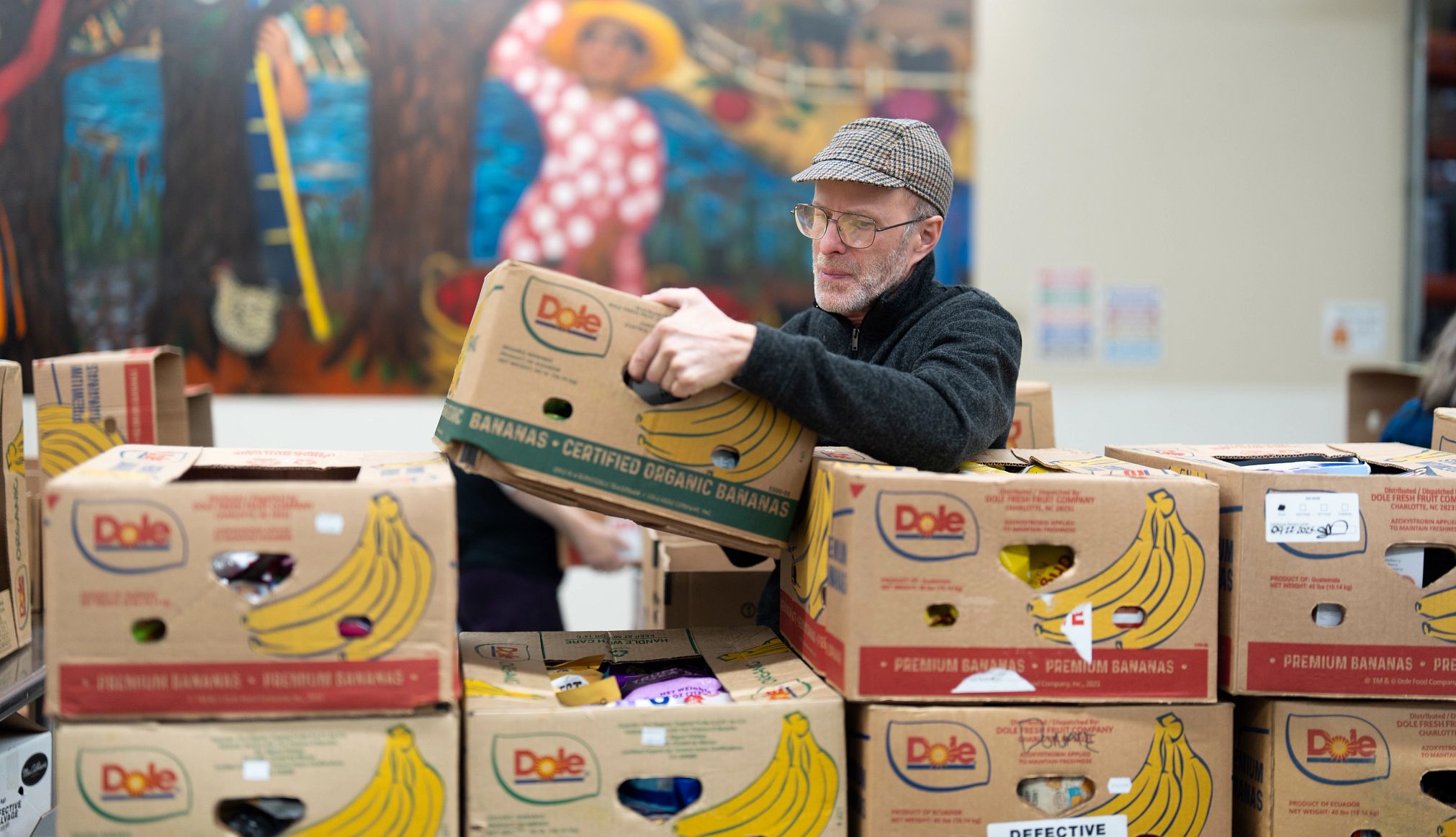AARP Hearing Center


In this story
Help hotline • Food pantries • Resources in your neighborhood • Senior centers • DoorDash & retailers
As food prices climb, millions of older Americans on fixed incomes are struggling to keep meals on the table — and the holiday season often makes that even more difficult.
Many older adults experience food insecurity. In 2023, 10 percent of adults 50 and older — the highest share in nearly a decade — faced hunger because of a lack of food access, according to AARP’s Public Policy Institute.
Many are still reeling from the October freeze in federal food assistance as a result of the government shutdown. Older adults went weeks without Supplemental Nutrition Assistance Program (SNAP) benefits, leading them to seek support in their communities for free or affordable groceries.
Older adults may continue to need support from hunger relief organizations around the country, as demand often surges during the holiday season.
Join Our Fight to Protect Older Americans
Here’s what you can do to help:
- Sign up to become an AARP activist for the latest news and alerts on issues you care about.
- Find out more about how we’re fighting for you every day in Congress and across the country.
- AARP is your fierce defender on the issues that matter to people 50-plus. Become a member or renew your membership today.
AARP has urged lawmakers and the Trump administration to protect SNAP from funding cuts and policy changes that make it harder for older adults to afford food.
AARP also worked to support food banks as they met the needs of older adults and those who lost SNAP during the shutdown. The AARP Foundation, a charitable affiliate, raised $2 million in emergency funds for hunger relief organizations around the country.
If you need food aid, here are some resources that may be available in your community.
Call 211
Even though SNAP is a federal program, it’s run by individual states and supported by local nonprofits and food banks that work directly with people facing food insecurity.
One of the easiest ways to find resources near you is by calling 211, your state’s social services helpline.
A quick call can connect you with programs that offer food aid. The staff and volunteers who answer calls can point you to nearby food pantries, free meal programs or other local resources.
Calls are confidential, according to the hotline’s website.
Prefer not to call? You can also text, chat online or search their database. Visit 211.org for local contact details.
Food banks, pantries and meal delivery
Across the country, food banks are increasing their collections and asking for volunteers to help ensure households receive food.


































































More From AARP
Women on Health Care, Retirement, Costs in 2025
AARP focus groups tap into views of female voters
US Government Shutdown Impacts Older Adults
Travel plans, SNAP food aid, Medicare telehealth and retirements all face uncertainty
The Government Shut Down. What Happens Next?
AARP lobbyist explains how important services will function